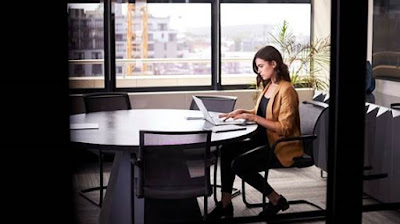Read the original article: Advice: Protecting Lone Workers Through Covid Restrictions
Protecting lone workers is an issue that businesses may not have come across previously, especially those based in busy city centre office blocks pre-coronavirus. Yet with many thriving business districts deserted through a lockdown and not everyone able to work from home, it’s an issue more management teams are having to consider.
 |
| Firms could be inadvertently putting employees at risk of security, mental health/wellbeing and medical risk |
“Most businesses have got to grips with the challenges around managing teams remotely, but what about the needs of those employees who can’t or won’t work from home. In the following Government guidelines, firms could be inadvertently putting employees who need to stay office-based at risk in other areas – security, mental health/wellbeing and medical suitability being just a few of the potential causes for concern.
“Even if there are a small number of employees in the workplace you should still put procedures in place for times in the day when workers will be alone for example lunchbreaks and variations in contracted hours.”
Security and Access Control
“Security is one of the main concerns,” said Jonathan. “Ensuring that staff members are not put into dangerous situations in the workplace. Don’t forget, empty offices could be a potential target for robberies, leaving staff on their own more vulnerable to theft. Your lone worker will need briefing and support on how to identify and report threats.
 |
| Empty offices are targets for robberies, lone office workers need support on dealing with such threats |
“Someone should be appointed to monitor the login records to ensure staff arrive and leave at the expected times – luckily that’s easy to do remotely with a digital ID card system. If your current access control system doesn’t allow you to do this, you should really think about upgrading your system.”
Find out more about this over on the Digital ID blog: https://www.digitalid.co.uk/blog/to-upgrade-or-not-to-upgrade-why-2020-is-the-time-to-migrate-your-access-control-system
“Having someone on call and close enough to respond in an emergency is another important consideration. A tip here is to print emergency contact details onto the reverse of their ID or access cards. Given that these should be kept on the person at all times, it means contact numbers easy to find and use if a person needs help quickly.
“Things like checking your employee has good mobile phone coverage in the place of work is something a lot of people don’t think about but is very important these days. If they don’t, then they’ll need an active landline within easy access.
“If photo ID is connected to an access control system, you may need to restrict access to some of the building in light of any new changes. Think about where needs to be accessed and how frequently by the lone worker, perhaps moving some things around within the building to ensure they can stick to a smaller footprint that will put them less at risk.
“A final thought on security is that coming in and leaving at exactly the same time every day carrying laptops or other equipment could make them a target for personal theft, this needs to be weighed up against travelling at times when it’s dark and isolated. All should be covered in a full risk assessment.
“It’s worth remembering that as a business you’re responsible for workers lone working at home too, so where there will not be complicated access concerns here, looking after the mental health and wellbeing of your team should remain a priority. As well as making sure they know what to do in a medical emergency”.
Read the original article: Advice: Protecting Lone Workers Through Covid Restrictions